
The Florida Museum of Natural History will be presenting multiple programming series at the library this spring, summer, and fall. Scientists will lead educational programs at all 12 of our library locations. The programs are designed to educate youth and make science fun. Each series will have a central topic, and then each program will emphasize knowledge from a different subcategory of that topic. Splash Into Science and Engineering Scientist Tools are 45-minute programs prepared for elementary-aged learners, though all are welcome. Protecting Pollinators and Prehistoric Life are 30-minute programs prepared for younger learners. All series involve fun activities and lots of opportunities for questions and learning. Check out the listings below to learn more about all the programs being offered; along with dates, times, and which locations around the Library District you can catch Science Surprises.
Science Surprises Series- Full Calendar Events
Early Explorer Series- Full Calendar Events
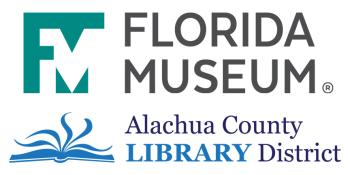
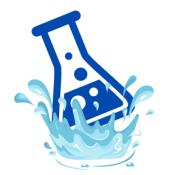
SPLASH INTO SCIENCE
Learn about the properties of water!
- Topic 1: Exploring the water cycle – Learn about the water cycle in this fun interactive game! See how water changes from solid to liquid to gas and travels around the Earth. Explore how plants use water and release it into the air. Join the adventure as a water molecule!
- Topic 2: Exploring capillary action – How does water move up a plant from the roots to the leaves? This is called capillary action, and it’s a special property of water. This activity will show how water moves through coffee filters and washable markers because of capillary action.
- Topic 3: Exploring surface tension – Did you know that some bugs and tiny organisms can walk on water? They can do this because of a special property of water called surface tension. In this activity, you will discover the answers to these questions and more!
- Topic 4: Exploring density – Have you ever wondered how turtles can swim and dive deep into the water? It’s all about density and buoyancy! This activity will help you understand these concepts better by letting you build a density bottle with different kinds of liquids and objects.
APRIL DATES AND TIMES
- Headquarters Library
Session Date Time Topic 1 Thursday, April 3rd 3:00 p.m. Exploring the water cycle 2 Thursday, April 10th 3:00 p.m. Exploring capillary action 3 Thursday, April 17th 3:00 p.m. Exploring surface tension 4 Thursday, April 24th 3:00 p.m. Exploring density
- High Springs Branch
Session Date Time Topic 1 Monday, April 7th 3:00 p.m. Exploring the water cycle 2 Monday, April 14th 3:00 p.m. Exploring capillary action 3 Monday, April 21st 3:00 p.m. Exploring surface tension 4 Monday, April 28th 3:00 p.m. Exploring density
MAY DATES AND TIMES
- Archer Branch
Session Date Time Topic 1 Thursday, May 8th 3:30 p.m. Exploring the water cycle 2 Thursday, May 15th 3:30 p.m. Exploring capillary action 3 Thursday, May 22nd 3:30 p.m. Exploring surface tension 4 Thursday, May 22nd 3:30 p.m. Exploring density
- Hawthorne Branch
Session Date Time Topic 1 Tuesday, May 6th 3:00 p.m. Exploring the water cycle 2 Tuesday, May 13th 3:00 p.m. Exploring capillary action 3 Tuesday, May 20rd 3:00 p.m. Exploring surface tension 4 Tuesday, May 27th 3:00 p.m. Exploring density
AUGUST DATES AND TIMES
- Alachua Branch
Session Date Time Topic 1 Wednesday, August 6th 3:30 p.m. Exploring the water cycle 2 Wednesday, August 13th 3:30 p.m. Exploring capillary action 3 Wednesday, August 20th 3:30 p.m. Exploring surface tension 4 Wednesday, August 27th 3:30 p.m. Exploring density
SEPTEMBER DATES AND TIMES
- Cone Park Branch
Session Date Time Topic 1 Thursday, September 4th 3:00 p.m. Exploring the water cycle 2 Thursday, September 11th 3:00 p.m. Exploring capillary action 3 Thursday, September 18th 3:00 p.m. Exploring surface tension 4 Thursday, September 25th 3:00 p.m. Exploring density
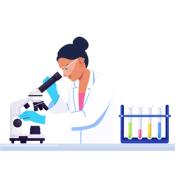
ENGINEERING SCIENTIST TOOLS
Scientists use all sorts of tools in order to make observations and measurements. Often, they must engineer tools for the job!
- Topic 1: Make a Pooter – Create your own bug collecting device! Learn why scientists invented this tool and how they use it.
- Topic 2: Make a Flashlight – Create your own flashlight and learn how they work and how scientists use them.
- Topic 3: Make an Anemometer – Create your own device to measure wind speed! Learn how this contraption works and how scientists use this tool.
- Topic 4: Make a Snake Catcher – In this activity you get to invent a device to solve a problem: how can I catch a snake without touching it? (Disclaimer: real snakes are not used or encouraged to be captured during this program)
APRIL DATES AND TIMES
- Library Partnership Branch
Session Date Time Topic 1 Friday, April 4th 4:00 p.m. Make a Pooter 2 Friday, April 11th 4:00 p.m. Make a Flashlight 3 Friday, April 18th 4:00 p.m. Make an Anemometer 4 Friday, April 25th 4:00 p.m. Make a Snake Catcher
MAY DATES AND TIMES
- Tower Road Branch
Session Date Time Topic 1 Friday, May 9th 3:30 p.m. Make a Pooter 2 Friday, May 16th 3:30 p.m. Make a Flashlight 3 Friday, May 23rd 3:30 p.m. Make an Anemometer 4 Friday, May 30th 3:30 p.m. Make a Snake Catcher
AUGUST DATES AND TIMES
- Micanopy Branch
Session Date Time Topic 1 Thursday, August 7th 3:00 p.m. Make a Pooter 2 Thursday, August 14th 3:00 p.m. Make a Flashlight 3 Thursday, August 21st 3:00 p.m. Make an Anemometer 4 Thursday, August 28th 3:00 p.m. Make a Snake Catcher
- Waldo Branch
Session Date Time Topic 1 Thursday, August 7th 10:30 a.m. Make a Pooter 2 Thursday, August 14th 10:30 a.m. Make a Flashlight 3 Thursday, August 21st 10:30 a.m. Make an Anemometer 4 Thursday, August 28th 10:30 a.m. Make a Snake Catcher
SEPTEMBER DATES AND TIMES
- Millhopper Branch
Session Date Time Topic 1 Tuesday, September 2nd 3:00 p.m. Make a Pooter 2 Tuesday, September 9th 3:00 p.m. Make a Flashlight 3 Tuesday, September 16th 3:00 p.m. Make an Anemometer 4 Tuesday, September 23rd 3:00 p.m. Make a Snake Catcher
- Newberry Branch
Session Date Time Topic 1 Friday, September 5th 3:30 p.m. Make a Pooter 2 Friday, September 12th 3:30 p.m. Make a Flashlight 3 Friday, September 19th 3:30 p.m. Make an Anemometer 4 Friday, September 26th 3:30 p.m. Make a Snake Catcher
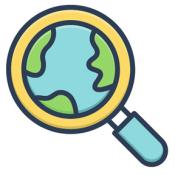
Early Explorers Series
Early Explorers is a special series specifically designed for our younger learners. Our two Early Explorer series teach children about pollination and prehistoric life.
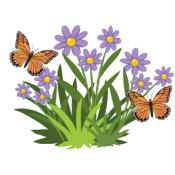
PROTECTING POLLINATORS--In this series children learn why pollinators are so important by examining real pollinator specimens and creating a pollinator-friendly habitat at their learning sites.
- Topic 1: What is a Pollinator – Through hands-on exploration of insect, bat, and bird specimens and models, children learn who are pollinators.
- Topic 2: I'm a Pollinator – Children will learn how butterflies pollinate plants by playing a fun game where they get to pollinate plants by becoming a butterfly.
- Topic 3: Make a Pollinator Garden Friend – Children will learn about insects that help pollinator gardens and will make their own garden friend to decorate their pollinator garden.
- Topic 4: Planting a Pollinator Garden – Children help plant and water real pollinator-friendly plants at their learning centers. They also help decorate their garden with their pollinator garden friends created in the previous lesson.
Protecting Pollinators will only be held at the Headquarters Library.
| Session | Date | Time | Topic |
| 1 | Thursday, April 3rd | 11:00 a.m. | What is a pollinator |
| 2 | Thursday, April10th | 11:00 a.m. | I'm a pollinator |
| 3 | Thursday, April17th | 11:00 a.m. | Make a pollinator garden friend |
| 4 | Thursday, April 24th | 11:00 a.m. | planting a pollinator garden |
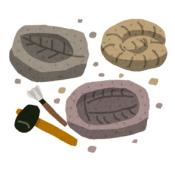
PREHISTORIC LIFE – How do we know about animals that lived in the past? In this series children will examine real Florida fossils, replicas and models to learn about the fascinating prehistoric animals that roamed Florida millions of years ago.
- Topic 1: Exploring Fossils – Scientists use fossils to learn about plants and animals that lived a long time ago. Children will examine and compare various types of real fossils and make their own imprint fossil.
- Topic 2: Fossil Dig – Children will take on the role of paleontologist and uncover fossils in a dig pit to better understand how paleontologists work. They will use an ID sheet to identify the fossils they find.
- Topic 3: Trackways – Children will be introduced to the idea that footprints and other kinds of impressions can also be fossils. They will use footprints to tell about the animal that made it.
- Topic 4: Florida's Megafauna – Meet Megalodon, the Giant Ground sloth, and Columbian Mammoth to learn more about the ancient megafauna that lived in Florida.
Prehistoric Life will only be held at the Millhopper Branch.
| Session | Date | Time | Topic |
| 1 | Tuesday, September 9th | 10:30 a.m. | Exploring Fossils |
| 2 | Tuesday, September 16th | 10:30 a.m. | Fossil Dig |
| 3 | Tuesday, September 23rd | 10:30 a.m. | Trackways |
| 4 | Tuesday, September 30th | 10:30 a.m. | Florida's Megafauna |
Want more Science Surprises in your life? The Florida Museum will also be visiting all 12 library branches this summer. Stay tuned to our Summer at the Library page as we get more updates.